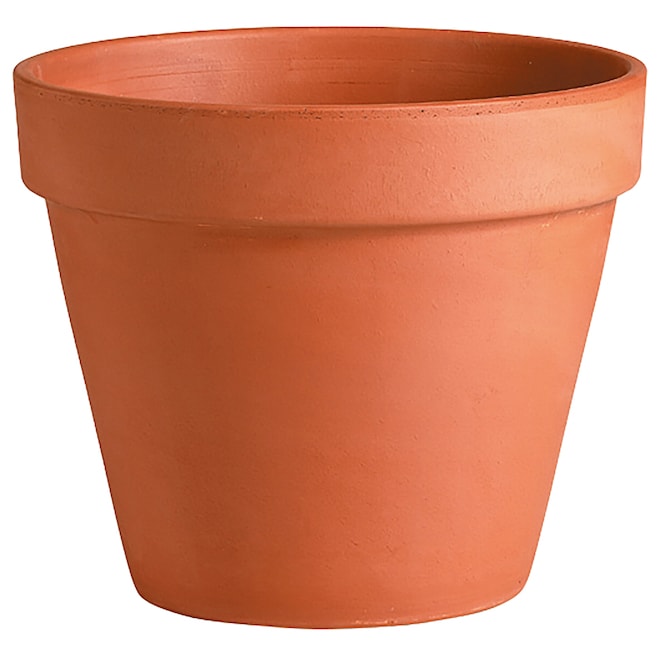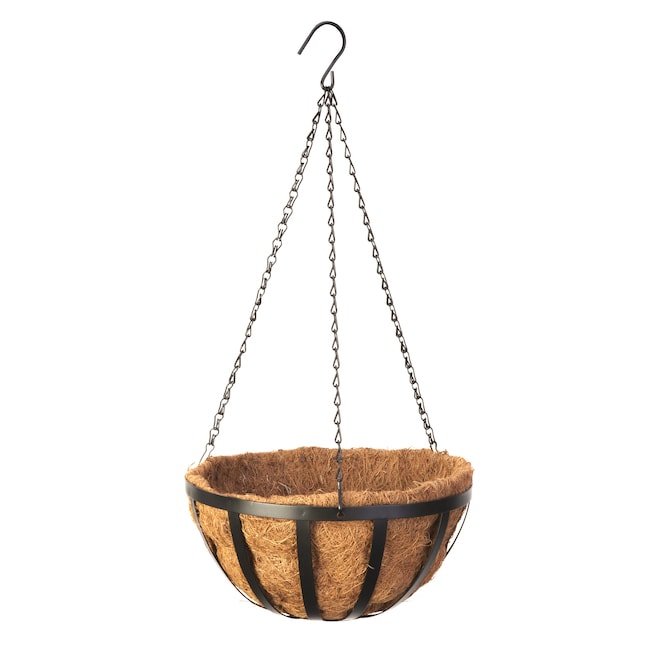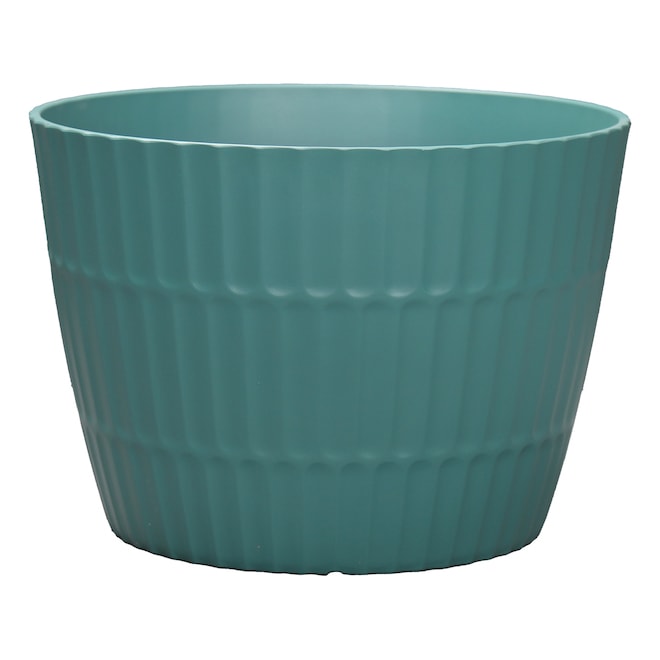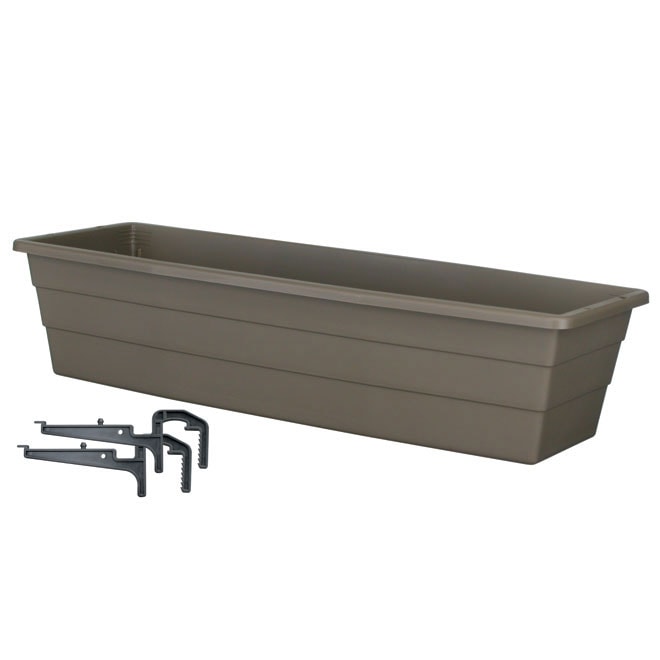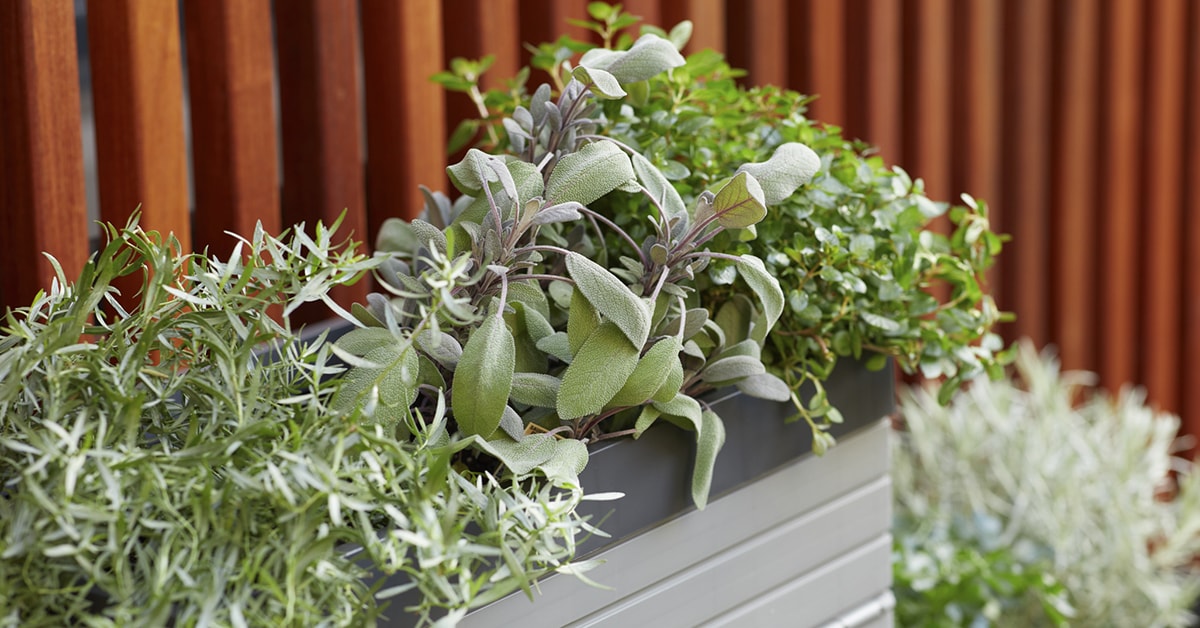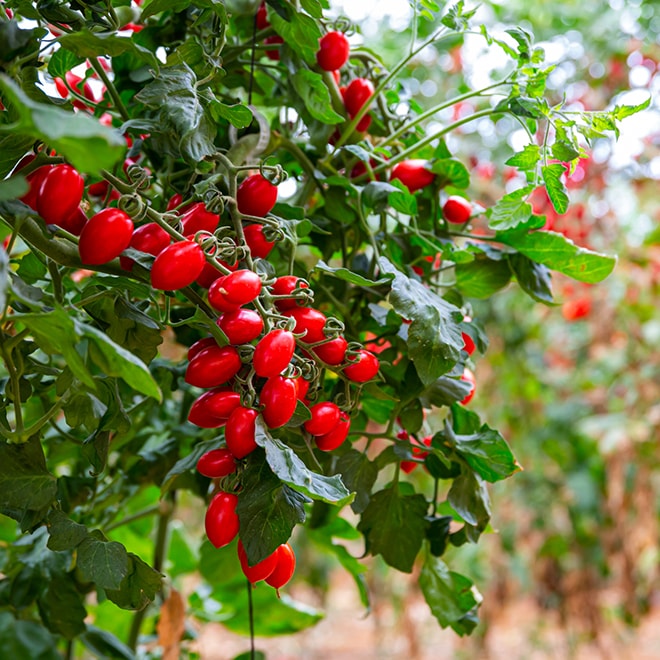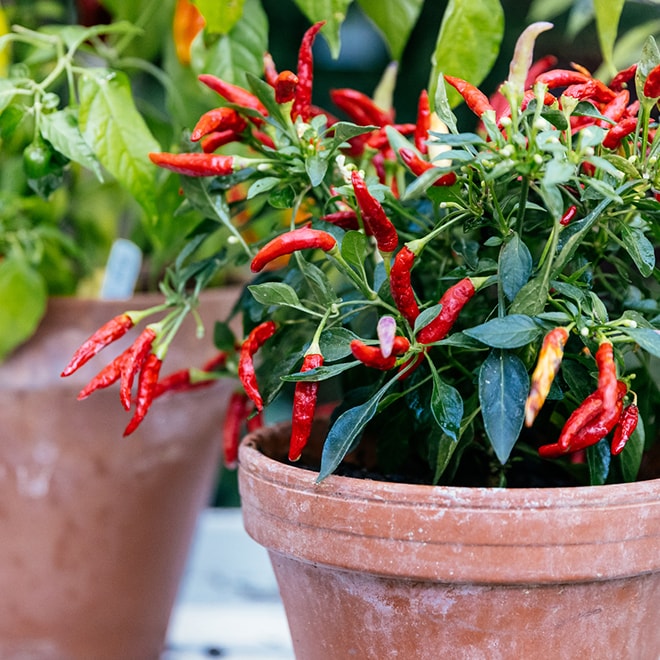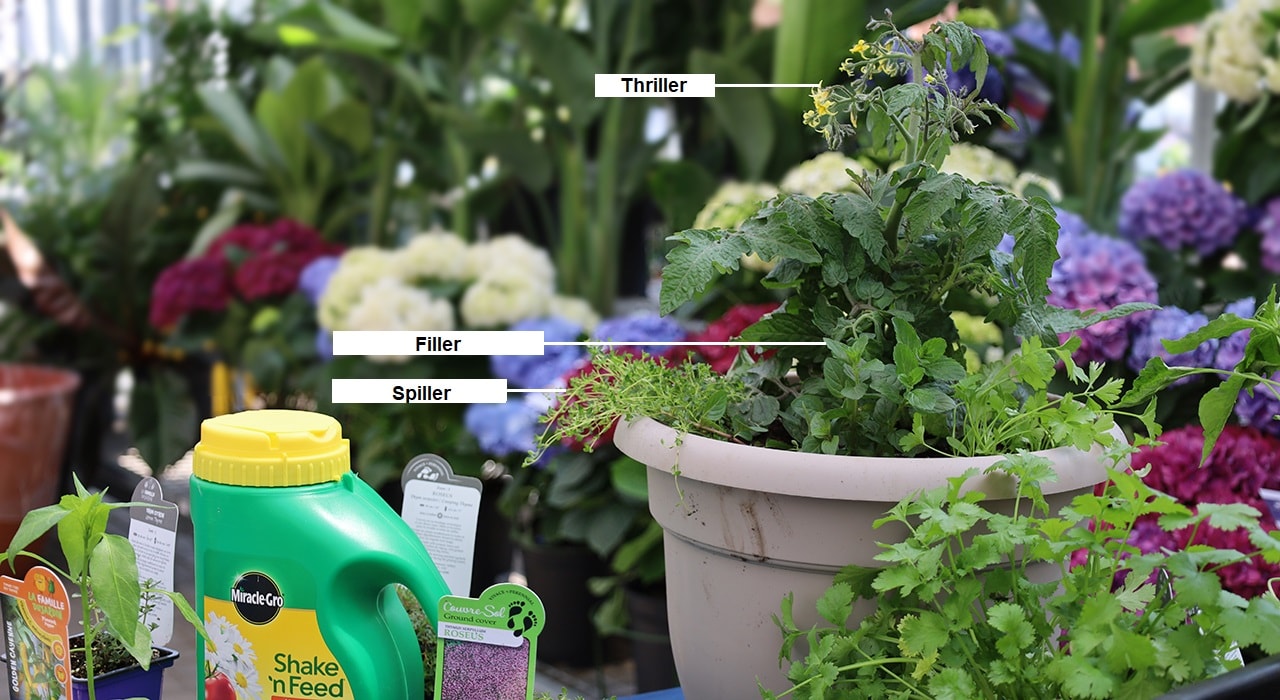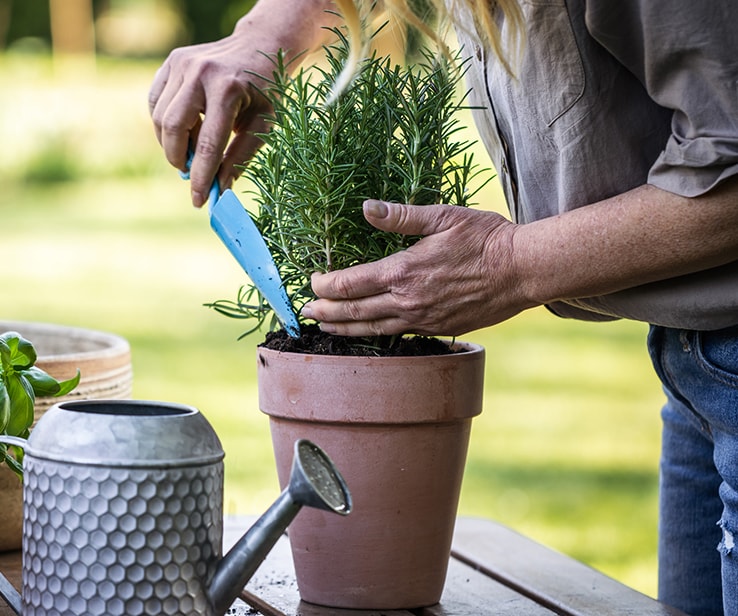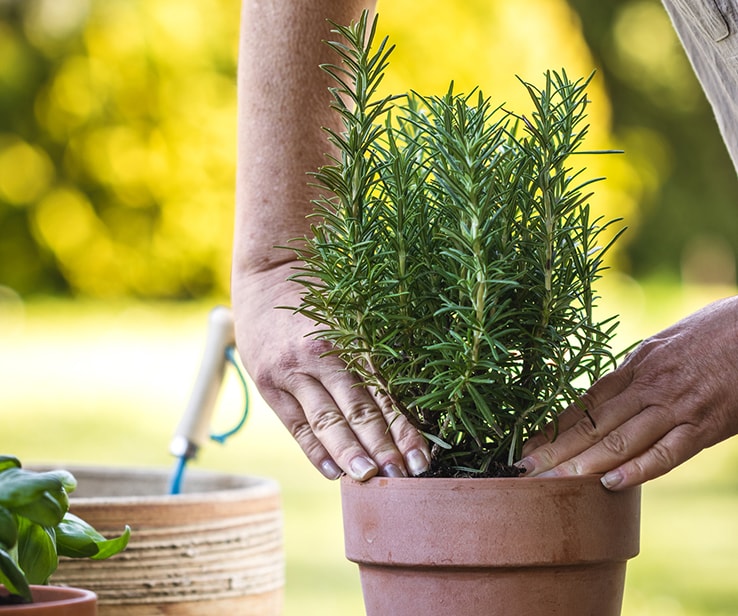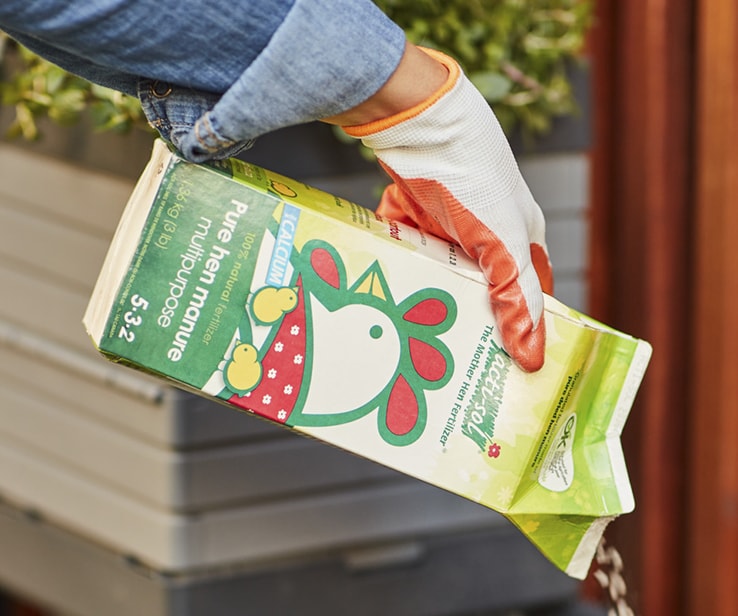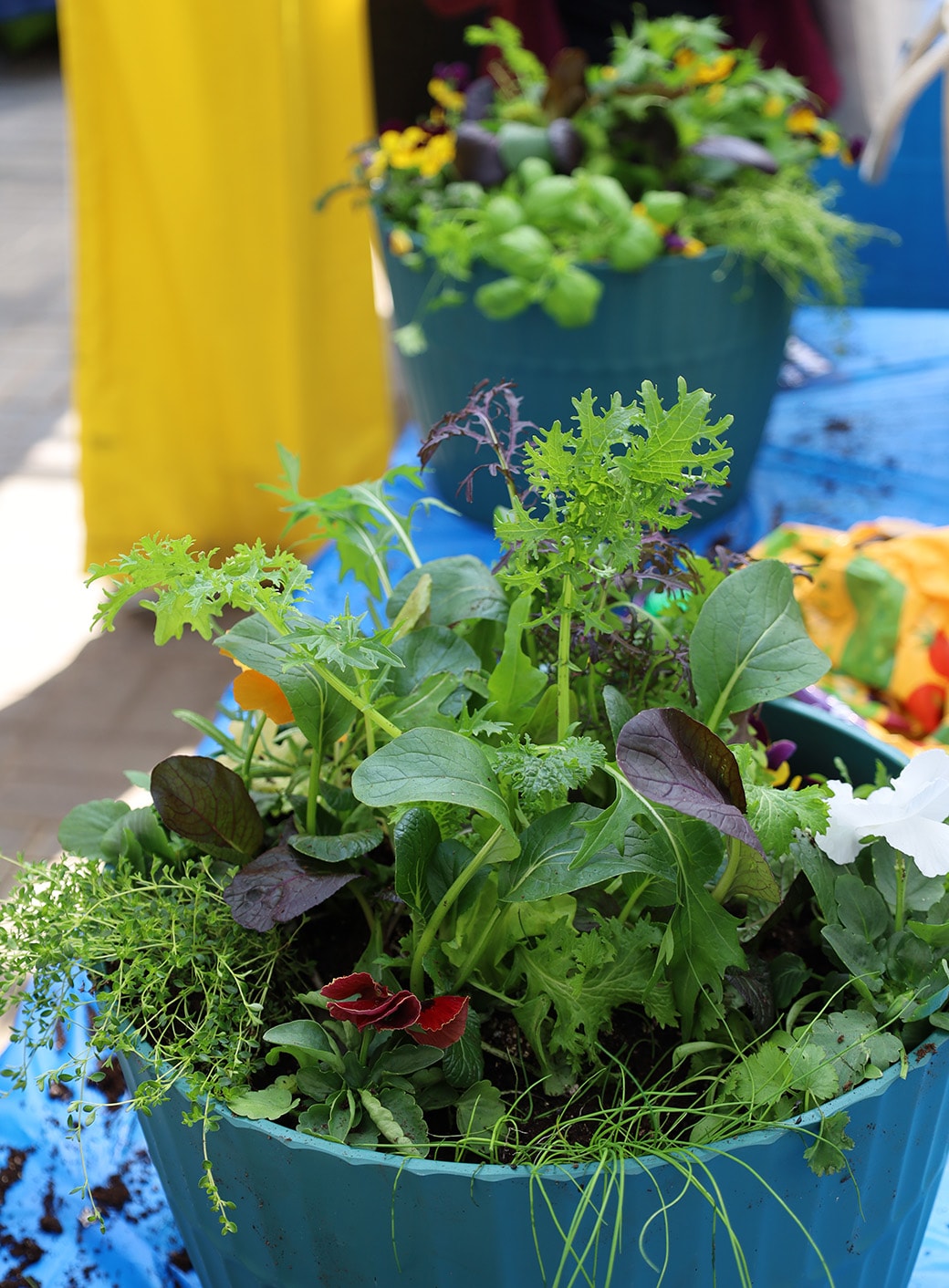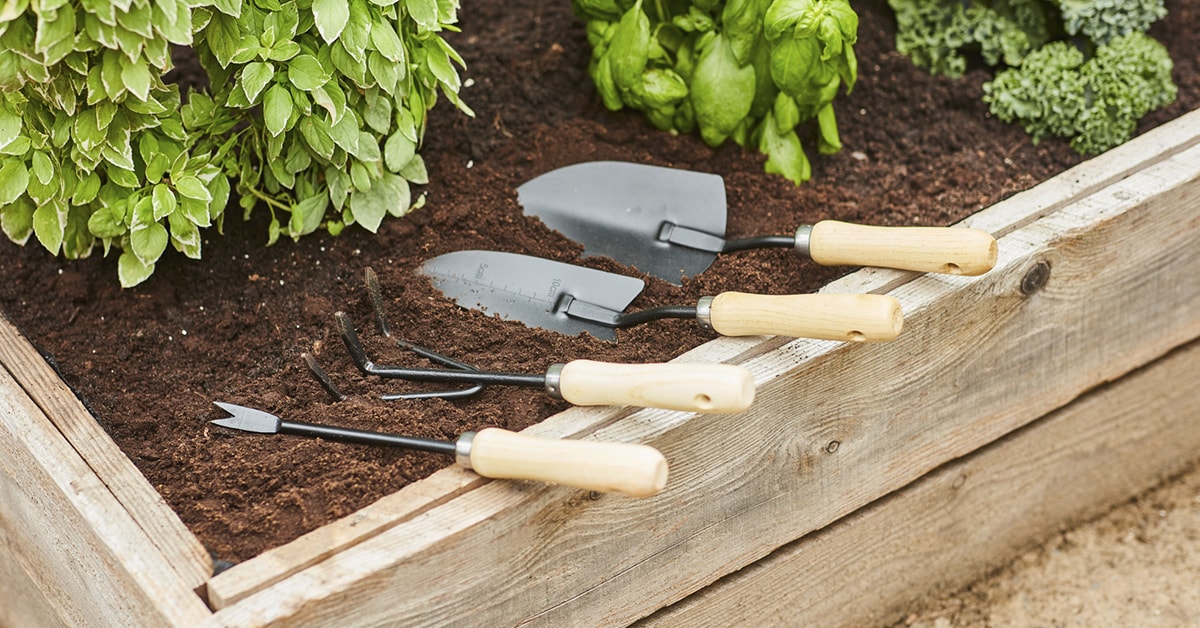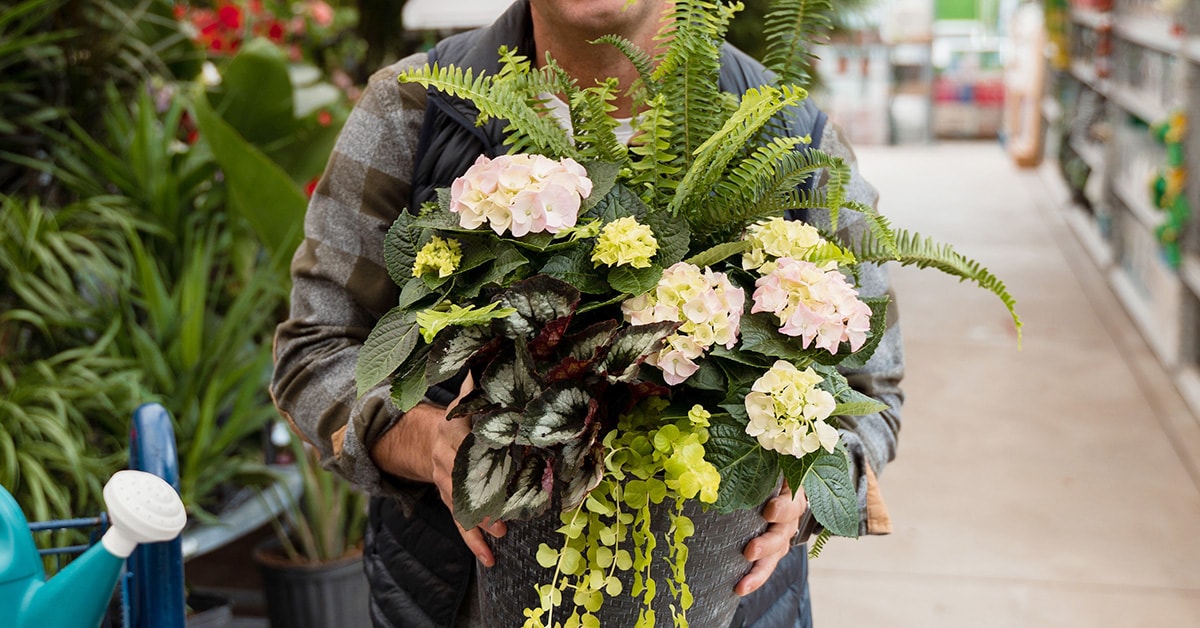1Pick a Planter
Raised beds, pedestal planters, hanging planters, wall planters, etc. The possibilities are endless! Of course, it’s important to choose something you love. However, to have a productive container garden all summer long, make sure you choose the right pots for your plants. Here are some important factors to consider:
- Height:
- 4"-5": lettuce and other salad greens, radishes, herbs.
- 6"-7": beans, kohlrabi, onions, peas, mint.
- 8"-9": carrot, Swiss chard, cucumber, eggplant, leek, bell pepper, hot pepper, spinach.
- 10"-12": tomato, beet, cabbage (kale, broccoli, cauliflower, etc.), potato, squash (opt for small varieties), zucchini, fruit bushes, rhubarb.
- Diameter: 12"+
- Soil drainage: Whatever your choice, make sure your container has a drainage system. If not, you will need to drill holes in the bottom to allow water to drain. A water tray is optional, but highly recommended.
- Material:
- Plastic: Usually the most affordable option; many patterns and colours available; lightweight; good moisture retention; easy maintenance.
- Terracotta: Aesthetic appeal; heavier than plastic; porous surface that allows air and water to pass through (good for plant growth); must be stored during winter.
- Fabric and Natural Fibre: Very light and easy to carry; allows water and air to pass through (good for plant growth); easy maintenance; requires more frequent watering.
